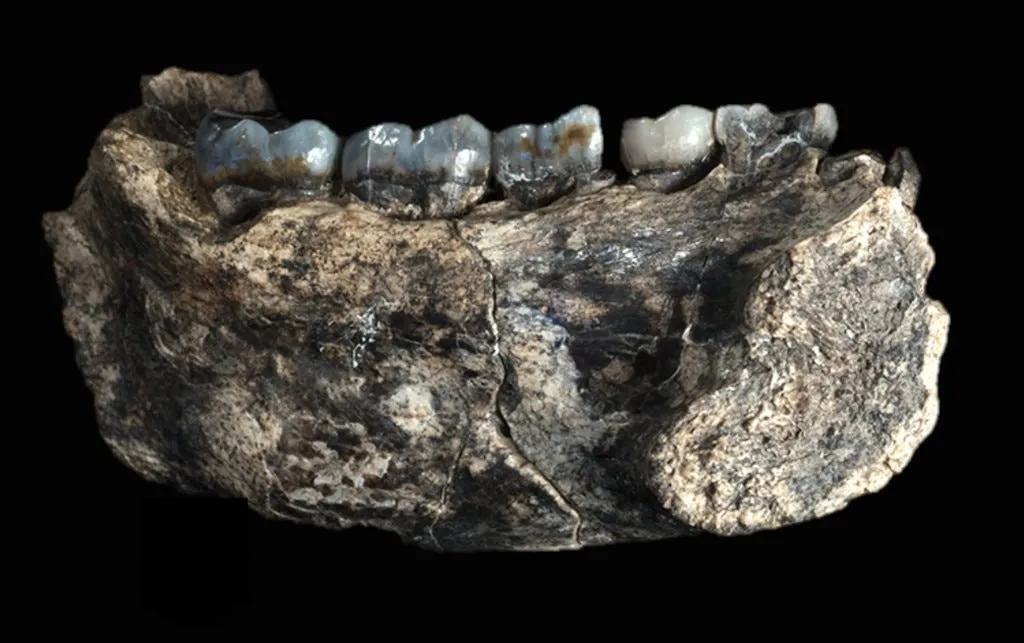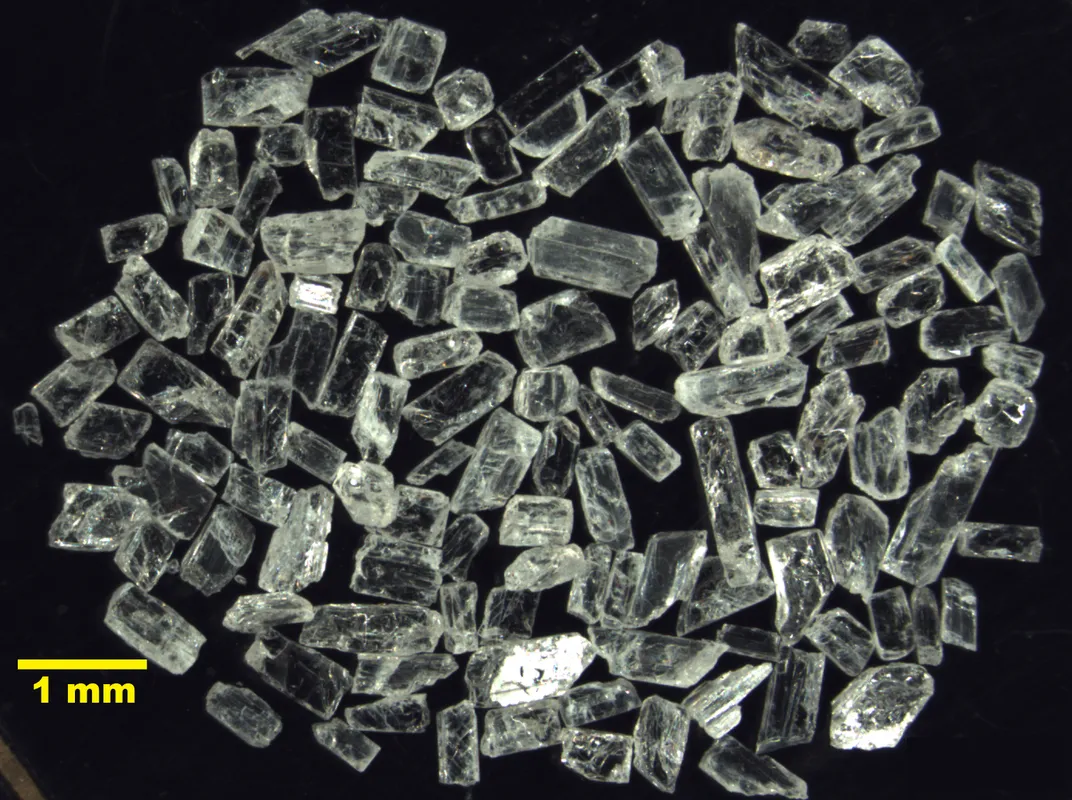How Do Scientists Date Fossils?
Geologists Erin DiMaggio and Alka Tripathy-Lang explain techniques for targeting the age of a fossil find
:focal(1858x1049:1859x1050)/https://tf-cmsv2-smithsonianmag-media.s3.amazonaws.com/filer/50/23/50236c88-946b-4926-967d-3ada01e16bde/p1000861_crop.jpg)
This is the fourth in a five-part series written by experts featured in the Smithsonian's new Hall of Fossils—Deep Time exhibition, now on view at the National Museum of Natural History. The full series can be found by visiting our Deep Time Special Report
“No fossil is buried with its birth certificate,” wrote the renowned science editor Henry Gee in his 2000 treatise, In Search of Deep Time. While true, fossils are buried with plenty of clues that allow us to reconstruct their history. An array of absolute dating techniques has made it possible to establish the timescale of Earth’s history, including the age and origin of life, the timing of mass extinctions and the record of human evolution.
In 2013, in Ethiopia's Afar region, our research team discovered a rare fossil jawbone belonging to our genus, Homo. To solve the mystery of when this human ancestor lived on Earth, we looked to nearby volcanic ash layers for answers. Using a geologist’s magnifying glass, we can carefully scan the ash in search of tiny minerals that are smaller than a single sprinkle on a sugar cookie and that hold the key to determining the age of a fossil.
Working in this part of Ethiopia is quite the adventure. It is a region where 90 degrees Fahrenheit seems cool, dust is a given, water is not, and a normal daily commute includes racing ostriches and braking for camels as we forge paths through the desert. But, this barren and hostile landscape is one of the most important locations in the world for studying when and how early humans began walking upright, using tools and adapting to their changing environments.

Early on, before we had more precise means to date fossils, geologists and paleontologists relied on relative dating methods. They looked at the position of sedimentary rocks to determine order. Imagine your laundry basket—the dirty clothes you wore last weekend sit at the bottom, but today's rest on top of the pile. The concept for sedimentary rocks is the same. Older rocks are on the bottom, younger ones are on top. Researchers also used biostratigraphy, which is the study of how fossils appear, proliferate and disappear throughout the rock record, to establish relative ages. We still use these relative dating methods today as a first approach for dating fossils prior to assigning a numerical, or absolute, age.
Can we date actual fossils? Sometimes.
Scientists called geochronologists are experts in dating rocks and fossils, and can often date fossils younger than around 50,000 years old using radiocarbon dating. This method has been used to provide dates for all kinds of interesting material like cave rock art and fossilized poop. Unfortunately, fossils like our jawbone, as well as the dinosaurs on view in the new "Fossil Hall—Deep Time" exhibition at the Smithsonian's National Museum of Natural History, are just too old for radiocarbon dating. In these cases, we have to rely on the rocks themselves. We date the rocks and by inference, we can date the fossils.

The first big challenge is to find the right kind of rocks to collect for laboratory analysis. We are fortunate that the Afar region has volcanic ash horizons in the sedimentary rock layers. In fact, just below where the fossil jawbone was discovered, our team found a new volcanic ash layer that we named the Gurumaha Tuff. The word gurumaha in the local language means milkshake—a reflection of our mindset in the 90 degree afternoon heat. In a sense, we can think of volcanic ash layers as buried stopwatches. When the volcano erupts the timer starts, and we use absolute dating techniques to tell the elapsed time.
Volcanic rocks typically contain naturally radioactive minerals—our sugar cookie sprinkles. We can date these minerals using techniques based on the radioactive decay of isotopes, which occurs at known rates. Measuring isotopes typically involves lasers and mass spectrometers and sometimes even nuclear reactors. We calculate age using the decay rate and isotope measurements, which gives us the elapsed time on our stopwatch.
We successfully dated the Gurumaha Tuff to 2.82 million years old by dating the naturally radioactive mineral feldspar. Since the jawbone eroded from above the Gurumaha Tuff, it must be younger. We calculated the jawbone is between 2.80 and 2.75 million years old, making it the oldest known fossil of our genus Homo.

Geochronologists have an abundance of tools at their disposal, but still, some rocks and fossils prove difficult to date. Innovations to existing dating methods are eliminating these barriers. For example, revisions to a method called electron spin resonance allow scientists to date rare fossils, like hominin teeth, because they can directly date the fossil without visibly damaging the specimen. In the Afar, scientists are attempting to date the actual layers from which the fossils erode, rather than relying on the presence of volcanic ash. This would more accurately tell us the age of fossil-bearing rocks, and open new field sites for exploration that lack such layers.
Fossils span geologic time from hundreds to even billions of years and are discovered in many rock types and settings. Selecting a suitable dating technique is a critical step to obtaining a meaningful and accurate age.
Scientists have dated fossils found in South African caves to between 236,000 to 335,000 years old using several different geochronometers, including optically stimulated luminescence, a tool that allows us to calculate the last time cave sediments were exposed to light. Another common method, uranium-lead dating, relies on the radioactive decay of uranium and can be used to date rocks containing the oldest known fossils on Earth—older than 3.5 billion years old! To put that in context, the age of the Earth is 4.54 billion years, but our species has only been around for approximately 300,000 years.
The age of the Earth and origin of life is almost unfathomable, but the Smithsonian’s new Deep Time Hall is designed to help us grasp the enormity of Earth’s history in light of our present-day impacts. The 18th-century geologist James Hutton recognized that geologic processes require long timescales, a concept central to what we mean by the term deep time. The purpose of geochronology—dating rocks and fossils—is to weave together the dates we obtain to tell the extraordinary story of Earth’s deep time.
/https://tf-cmsv2-smithsonianmag-media.s3.amazonaws.com/accounts/headshot/IMG-6730.JPG)
/https://tf-cmsv2-smithsonianmag-media.s3.amazonaws.com/accounts/headshot/family_2018-32.jpg)